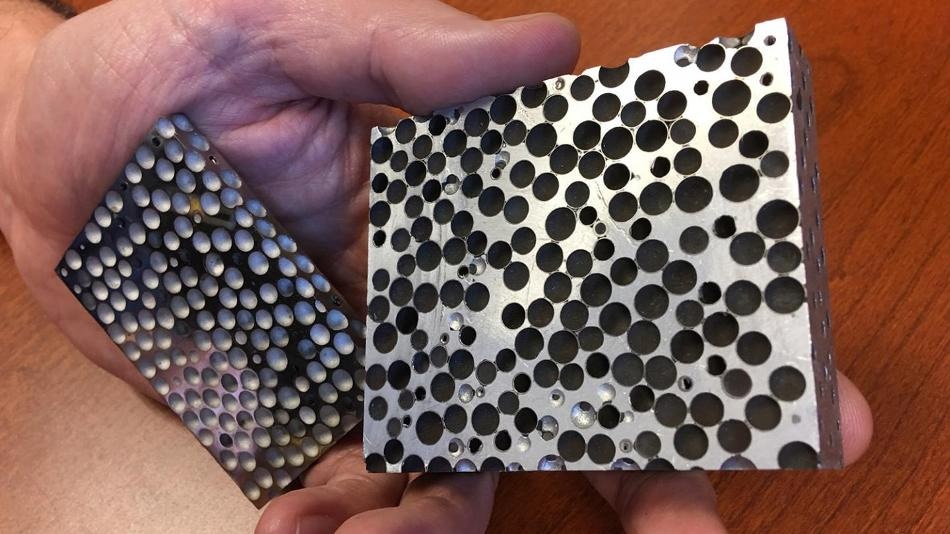Mar 14 2017
 Researchers at North Carolina State University have developed a range of composite metal foams that are lighter and stronger than the materials they are made of. The foams can be used in applications from armor to hazardous material transport -- and the researchers are now looking for collaborators to help identify and develop new applications. (Credit - Afsaneh Rabiei)
Researchers at North Carolina State University have developed a range of composite metal foams that are lighter and stronger than the materials they are made of. The foams can be used in applications from armor to hazardous material transport -- and the researchers are now looking for collaborators to help identify and develop new applications. (Credit - Afsaneh Rabiei)
A team of researchers at North Carolina State University have created a range of composite metal foams (CMFs) that can be used in applications ranging from armor to dangerous material transport. The team is currently looking for partners to help discover and develop new applications. To achieve that, the researchers are issuing a detailed overview and new data on their CMFs.
Over the past 12 years, we have published a suite of papers on everything from how to make CMFs to a wide variety of the materials’ properties, including how they handle high-speed impacts, radiation and intense heat. The CMFs and their manufacturing processes are patented, but our goal for this paper is to give other researchers a thorough overview of the materials – including previously unpublished data – because we think the material can save lives in a variety of applications. We’re hopeful that others in the research community may think of additional applications and come to us with ideas that we can collaborate on.
Afsaneh Rabiei, Professor of Mechanical and Aerospace Engineering, NC State
Earlier research from Rabiei’s group has revealed that CMFs, besides being lightweight: can decrease armor-piercing bullet penetration; are highly effective at shielding gamma rays, X-rays, and neutron radiation; and can handle fire and heat twice as well as the plain metals they are produced from.
The latest data in the recent paper relates to earlier research; for instance, formerly unpublished figures on how the material performs in reaction to high-speed impacts and cyclic loading. The information is helpful to researchers, but does not change their understanding of the material’s elementary properties.
Rabiei’s team is currently involved in three projects that utilize the CMFs:
- A Department of Transportation-funded project to build storage containers for transporting dangerous materials;
- A Department of Defense-funded effort to develop vehicle armor that addresses threats from blasts, small arms, and fragmentation from explosives; and
- A NASA-funded project aiming at structural applications for airplanes.
If others in the research community would like to work together in exploring additional applications, we’d love to talk to them.
Afsaneh Rabiei, Professor of Mechanical and Aerospace Engineering, NC State
The research paper titled “Overview of Composite Metal Foams and their Properties and Performance,” was published online in the Advanced Engineering Materials journal on March 13. Rabiei and Jacob Marx, a Ph.D. student at NC State co-authored the paper.
Video of the material stopping an armor-piercing bullet can be viewed at https://www.youtube.com/watch?v=lWmFu-_54fI